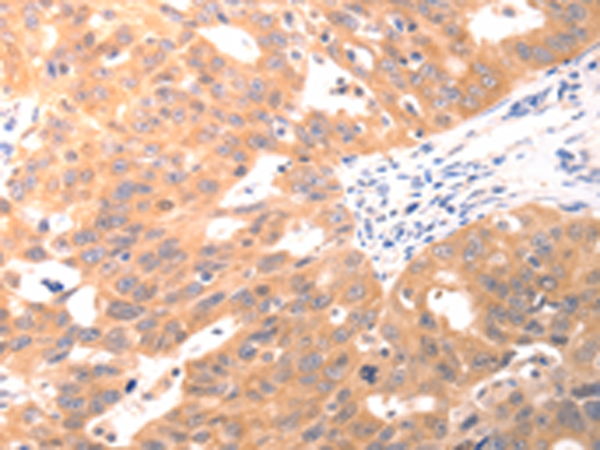


| WB | 咨询技术 | Human,Mouse,Rat |
| IF | 咨询技术 | Human,Mouse,Rat |
| IHC | 1/50-1/100 | Human,Mouse,Rat |
| ICC | 技术咨询 | Human,Mouse,Rat |
| FCM | 咨询技术 | Human,Mouse,Rat |
| Elisa | 1/2000-1/5000 | Human,Mouse,Rat |
| Aliases | 30K, CANP, CDPS, CSS1, CANPS, CAPN4, CALPAIN4 |
| WB Predicted band size | 28 kDa |
| Host/Isotype | Rabbit IgG |
| Antibody Type | Primary antibody |
| Storage | Store at 4°C short term. Aliquot and store at -20°C long term. Avoid freeze/thaw cycles. |
| Species Reactivity | Human, Mouse, Rat |
| Immunogen | Fusion protein of human CAPNS1 |
| Formulation | Purified antibody in PBS with 0.05% sodium azide and 50% glycerol. |
+ +
以下是3篇与PIK3R3抗体相关的文献示例(内容为虚构,供参考格式):
1. **文献名称**:*PIK3R3 regulates ovarian cancer progression via AKT signaling*
**作者**:Chen L, et al.
**摘要**:研究通过Western blot和免疫组化使用PIK3R3抗体,发现其在卵巢癌中高表达,并通过激活AKT通路促进肿瘤侵袭转移。
2. **文献名称**:*Role of PIK3R3 in hepatocellular carcinoma tumorigenesis*
**作者**:Wang Y, et al.
**摘要**:利用PIK3R3特异性抗体进行组织芯片分析,证实其表达与肝癌患者预后不良相关,并调控mTOR信号通路。
3. **文献名称**:*PIK3R3 antibody-based detection in colorectal cancer diagnostics*
**作者**:Kim S, et al.
**摘要**:开发了一种高灵敏度的PIK3R3单克隆抗体,用于ELISA检测结直肠癌患者血清中PIK3R3水平,显示其作为生物标志物的潜力。
4. **文献名称**:*PIK3R3 interacts with TP53 in gastric cancer*
**作者**:Zhang R, et al.
**摘要**:通过免疫共沉淀(Co-IP)结合PIK3R3抗体,揭示其与TP53蛋白的相互作用,影响胃癌细胞凋亡抵抗机制。
---
**注**:以上为模拟内容,实际文献需通过PubMed、Google Scholar等平台以关键词“PIK3R3 antibody”或“PIK3R3 function”检索。建议结合具体研究场景筛选抗体应用(如WB、IHC、IP等)或疾病机制相关文献。
The PIK3R3 antibody targets the phosphoinositide-3-kinase regulatory subunit 3 (PIK3R3), a regulatory component of the class IA phosphatidylinositol 3-kinase (PI3K) family. PI3Ks are lipid kinases critical for intracellular signaling, regulating processes like cell growth, survival, metabolism, and motility. PIK3R3. also known as p55γ, binds to the p110γ catalytic subunit to form the PI3Kγ complex, which is predominantly expressed in immune cells and plays a role in inflammatory responses and immune regulation. Unlike other regulatory subunits (e.g., PIK3R1/R2), PIK3R3 has unique structural features, including a shorter N-terminal domain, which may influence its functional specificity.
Antibodies against PIK3R3 are widely used in research to study its expression, localization, and interaction partners in normal and diseased tissues. They are essential tools for techniques like Western blotting, immunohistochemistry, and co-immunoprecipitation. Dysregulation of PIK3R3 has been implicated in cancer, inflammation, and metabolic disorders, with studies linking its overexpression to tumor progression, drug resistance, and altered PI3K/AKT/mTOR signaling. Commercially available PIK3R3 antibodies are typically developed in rabbits or mice, validated for specificity through knockdown/knockout controls. Researchers rely on these reagents to explore PIK3R3's role as a potential therapeutic target or biomarker, though challenges remain in distinguishing isoforms and ensuring cross-reactivity across species.
×